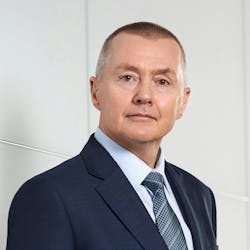Sustainable Aviation Fuel 'Central to Achieving Net Zero'

Central to achieving net zero CO2 in 2050 will be the use of sustainable aviation fuel (SAF).
Willie Walsh, director general of the International Air Transport Association (IATA), echoed the remarks of Chee Hong Tat, minister for Transport and second minister for Finance, Singapore, then added: “For us, this is the most important issue in the short to medium term.”
Both spoke at the 2024 Changi Aviation Summit in Singapore on Feb. 19.
Walsh pointed to strong industry demand for SAF.
“Every single drop of sustainable aviation fuel that has been produced has been used by the industry. In 2020, 2021, 2022, during the height of the pandemic, the industry continued to invest in this expensive product. And I've absolutely no doubt that we will continue to do so. What we need to see as an industry is greater production. We need to see governments providing the incentive for production to significantly increase. And with that increase in production, I guarantee you that the airlines will use all of the fuel produced despite the cost impact that will represent,” Walsh said.
While technology and labor issues present “fascinating opportunities” for the industry going forward, he said, “I'm very confident that we can overcome all of the challenges that we're likely to face. We can take confidence in our ability to overcome some significant challenges in recent times. And working together, with the right policy frameworks in place from governments, the industry has a very credible path to achieving all of the necessary measures to ensure that we are net zero in 2050.”
Confidence can be found in what already has been achieved, he said.
“If you look at the CO2 produced by the industry in 2000, and compare that to what we did in 2019 just before the pandemic, our CO2 footprint increased by almost 54%. But during that same period, passenger traffic grew by 175%. So, there is complete disconnect between passenger growth and our C02 growth. So, we know that we can be confident that with the measures we've put in place, with the advances in new technology, there are opportunities for us to address this critical issue.”
Chee introduced the Singapore Sustainable Air Hub Blueprint. Developed by the Civil Aviation Authority of Singapore (CAAS) in consultation with industry and other stakeholders, the blueprint sets out Singapore’s action plan for the decarbonization of its aviation sector. The blueprint will be submitted to the International Civil Aviation Organization (ICAO) as Singapore’s State Action Plan this month.
“To kickstart SAF adoption in Singapore, flights departing Singapore will be required to use SAF from 2026. We will aim for a 1% SAF target for a start, to encourage investment in SAF production and develop an ecosystem for more resilient and affordable supply. Our goal is to raise the SAF target beyond 1% in 2026 to 3 – 5% by 2030, subject to global developments and the wider availability and adoption of SAF,” he said.
CAAS will introduce a SAF levy for the purchase of SAF to achieve the uplift target.
“As the market for the supply of SAF is still nascent and the price of SAF can be volatile,” Chee said, “we will adopt a fixed-cost envelope approach to provide cost certainty to airlines and travelers.The levy will be set at a fixed quantum, based on the SAF target and projected SAF price at that point in time. For example, the quantum of the SAF levy in 2026 will be set based on the volume of SAF needed to achieve a 1% SAF target and the projected SAF price in 2026. The amount collected through the SAF levy will be used to purchase SAF, based on the actual price of SAF at the time of purchase. The SAF levy will not change, even if the actual SAF price differs from what is projected. Instead, the actual uplift volume of SAF will be adjusted based on the pre-determined SAF levy and prevailing SAF price.”
The levy will vary based on factors such as distance traveled and class of travel.
“As an indication,” Chee said. “we estimate that the levy to support a 1% SAF uplift in 2026 could increase ticket price for an economy class passenger on a direct flight from Singapore to Bangkok, Tokyo and London by around S$3, S$6 and S$16 respectively. Passengers in premium classes will pay higher levies.”
He said CAAS will continue consulting with stakeholders on the implementation of the SAF levy, before announcing more details in 2025 nearer the date of implementation.
ICAO adopted a long-term aspirational goal of achieving net zero carbon emissions for international aviation by 2050. At the Third ICAO Conference on Aviation and Alternative Fuels in 2023, ICAO and its member states agreed to a collective global aspirational vision to reduce international aviation emissions by 5 percent by 2030, through the use of cleaner fuels.